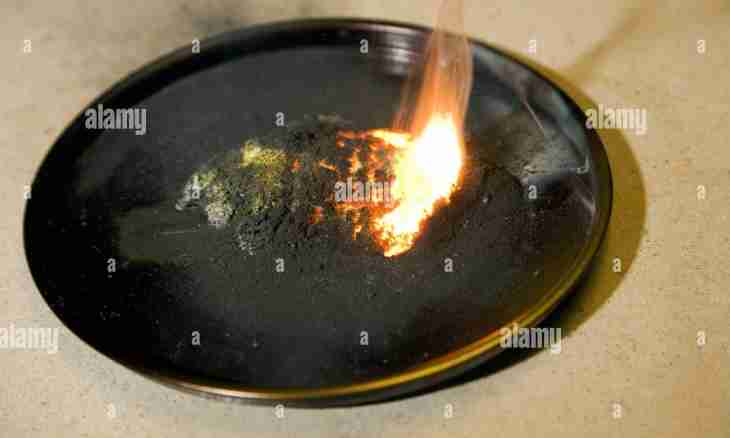Copper belongs to chemical elements I of group of a periodic system, in the nature it is widespread in a type of mix of two stable isotopes. Copper represents the pinkish-red metal having characteristic metal gloss. When raying its thin films have a greenish-bluish shade.
Instruction
1. In earth crust copper meets in a look oxygen - and sulfur-containing connections, fields of hydrothermal origin are characteristic of it. Ions of copper take part in many physiological processes of living organisms, for example, blood of the person contains about 0.001 mg/g of copper.
2. More than 250 minerals of copper, the most important of them are found: chalcopyrite, kowellin, chalcosine, bornite, cuprite, malachite and chrysocolla. Native copper meets very seldom. Ores divide on mineralogical structure into oxidic, sulphidic and mixed. Distinguish them and on structural features - copper ores are continuous (polymetallic, copper-nickel and pyritic) or prozhilkovo-interspersed (slates and coppery sandstones).
3. Copper has a face-centered cubic lattice. It is soft and malleable metal. It has low chemical activity. At the room temperature and in dry air copper is almost not oxidized, however when heating begins to grow dull because of formation of a film of oxides. Its interaction with oxygen of air becomes noticeable at a temperature about 200 °C.
4. Even at high temperatures copper on reacts with nitrogen, carbon and hydrogen, however it easily connects to halogens. Damp chlorine begins to interact with it at a usual temperature therefore the copper chloride soluble in water is formed.
5. Copper shows special affinity to selenium and sulfur. In their couples it burns. Hydrogen and other combustible gases influence copper ingots at high temperature, forming water vapor and carbon dioxide. They are allocated from copper, causing emergence of cracks that strongly worsens its mechanical properties.
6. Low content of copper is characteristic of copper ores therefore before melting they are enriched, separating valuable minerals from dead rock. About 80% of copper are taken by pyrometallurgical methods from concentrates. Melting is carried out in reflective furnaces, burning carbonaceous fuel in gas space over a bathtub surface. Hydrometallurgical methods of receiving copper are based on selective dissolution of the minerals containing copper in solutions of ammonia and sulfuric acid.
7. Copper has a number of properties, valuable to the equipment: plasticity, high electro- and heat conductivity. It is the main material for production of wires, more than a half of the extracted copper is used in the electrotechnical industry. High resistance of corrosion allows to create from it details of vacuum devices, fridges and heat exchangers.

